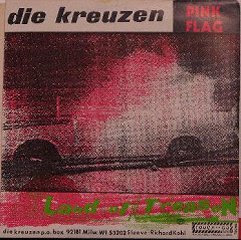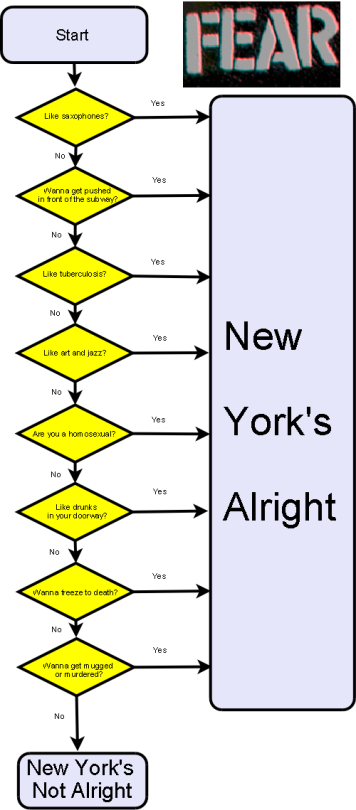
Once I'd decided I was going to finally get this blog rolling, I spent HOURS agonizing over whether I should feature a song from Deep Purple as my first post.
I'm really not that much into Deep Purple, and I certainly don't know how much residual cool, if any, remains for them. Even when I was in high school (in the early '80's), I thought, considering they were supposed to be a hard rock band, that they were just a little too slick to carry it off. "Hush" had very little to do with rock & roll for me, and "Smoke on the Water" was just kind of stupid, now wasn't it?
But here I go, 25 years later, and I'm starting this blog thing, and with all the weird shit I listen to, I've selected Deep Purple's "Highway Star," the live version anyway, to be my first post.
What's up with that?
I'm into one of my infrequent exercise kicks now, and last night as I was on the exercycle listening to Junior, there it was, right between "
Hey Ya" and "
Hit the Plane Down."
The little keyboard fanfare is instantly recognizable and then you hear the polite Japanese audience do their polite thing, and then get a little more excited as Ian Gillan announces the song.
Ritchie Blackmore works his opening downstroke into a ball of shiny electric sustain, and by the time Jon Lord does his organ solo with the gallopping rhythm guitar underneath, I'm remembering that well, if you were going to listen to Deep Purple at all,
Made In Japan was the one to listen to.
Because of the boring drum solo during "The Mule" and maybe some half-baked prog overtures during "Space Truckin'," even
Made In Japan is not a perfect album, but it almost certainly is Deep Purple's rawest, heaviest, least polished-up work, and it absolutely positively features the band's best lineup of Blackmore Gillan Lord Glover and Paice.
In the book version of
Fast Times At Ridgement High, Eddie Mann the ticket scalper who never made it into the movie has made a personal holiday of Ritchie Blackmore's Birthday; he stays home and listens to all of Blackmore's albums, one by one in chronological order, and Cameron Crowe writes
Mr. and Mrs. Mann would come home from work at six in the evening, and Eddie would be getting into the great stuff : "Woman From Tokyo" and the Made in Japan live album with all those excellent five-minute screams from when Ian Gillan was still in the group.
Fuckin' ay, bubba.
Gillan shredded his vocal cords into beef jerky with all the high-pitched screaming he did for Purple in this period. Although his screams on "Highway Star" are awesome enough, there's a moment somewhere else on the album where Gillan engages in a screaming match with the crowd, he goes "hey!" and the crowd shouts back "HEYY!" so he screams back "HEEEEYYYY!!!" and by the end it sounds like you're listening to a crazy man. It's something else.
The version of "Highway Star" on the studio
Machine Head is already pretty fast, probably the fastest thing I ever heard the band do, and rather energetic itself. But placed in an environment where Gillan is channeling the crowd's energy into these superhuman yells, the song becomes pretty much immaculate. Having just heard the song for the first time in twenty years yesterday, but about four times since, I'm in LOVE with the construction of Jon Lord's organ solo, with the way the first third of Ritchie Blackmore's solo is in a different key from the rest of the whole fucking song, and how the last third devolves into wonderful feedback noise. I told you how I love the rhythm guitar underneath Lord's solo. I'm in love with the way Gillan sings, "body control and everything."
And I love it how I'm never quite sure whether they're talking about a car or a girl.
You know, this is just totally a great fucking song, and it *totally* works as an intial post.
So what if it's 35 years old? Even at the age of 43, It appears I'm still crippled by the same ridiculous pretensions to coolness that ruined my behavior back when I was a teenager. Back then I was supposed to like Deep Purple, and now I figure I'm supposed to mock them. Either way, though, its pressure I invent to believe something because it's popular--at least among the people I imagine I want to impress--rather than because it's true.
But while not smart enough to be free of such desperate inclinations, I am at this late age at least smart enough to ignore them--at least upon reflection.
Everybody wants to be liked, and everyone wants what they write to be liked. And everyone wants their blog to be visited. But let's cut to the quick, and the hell with the pipe I was laying in an attempt to insulate myself from criticism.
Deep Purple weren't a great band for very long, and two generations have come of age since the time when they were. And they aren't any more my favorites than they were six hours ago for me. But the more and more I think about it, "Highway Star" works just fine as introductory blog post.
That I had thought anything else when I began writing this post--and this blog--
says as much about the overcorrections I continue to make even as a supposed adult to my own insecurities, as it does about a band that might be over the hill, that might be lacking in "residual cool," but still at its best was much more ferocious than your run-of-the-mill Kaiser Monkey or Vampire Fire Chief.
Deep Purple - Made In Japan - 1 - Highway Star.mp3
This file was removed January 14, 2009. If you're still way interested in coming up with a copy of this--and really can't figure out where you might get one--drop me an email and I'm sure I'll be able to figure something out for you.
File under: Osaka Rock




 Jon Marlowe from the old Miami News wrote the review that got me to go out and buy Rust Never Sleeps, while presciently championing all kinds of awesome scuzz rock that gets worshipped now in retrospect--but he hated prog, once calling Kansas "the band that are not a band." Creem had as much to do with my buying White Light White Heat as any earthly condition--but chief scribe Lester Bangs' hate of ELP was, and is, legendary.
Jon Marlowe from the old Miami News wrote the review that got me to go out and buy Rust Never Sleeps, while presciently championing all kinds of awesome scuzz rock that gets worshipped now in retrospect--but he hated prog, once calling Kansas "the band that are not a band." Creem had as much to do with my buying White Light White Heat as any earthly condition--but chief scribe Lester Bangs' hate of ELP was, and is, legendary.




 The factory preloaded its mellotrons with a choice of three sounds: strings, cello, or an 8-voice choir. But the thing about the M400 that endeared itself to musicians, and continues to, is that its tapes came in a removeable frame, meaning that artists could, with a certain amount of labor, switch away from the preloaded to sounds to those they themselves created.
The factory preloaded its mellotrons with a choice of three sounds: strings, cello, or an 8-voice choir. But the thing about the M400 that endeared itself to musicians, and continues to, is that its tapes came in a removeable frame, meaning that artists could, with a certain amount of labor, switch away from the preloaded to sounds to those they themselves created.
 Perhaps you noticed about fifteen years ago, the Walt Disney World people finally admitted that their Tomorrowland attraction had pretty much gotten everything wrong. They removed the "Mission to Mars" and "Star Jets" attractions, and they redid and rebuilt and repainted everything to match the perspective of an imagineer who lived during the '30's and '40's. When, not incidentally, the pulp magazines were at their height.
Perhaps you noticed about fifteen years ago, the Walt Disney World people finally admitted that their Tomorrowland attraction had pretty much gotten everything wrong. They removed the "Mission to Mars" and "Star Jets" attractions, and they redid and rebuilt and repainted everything to match the perspective of an imagineer who lived during the '30's and '40's. When, not incidentally, the pulp magazines were at their height.














